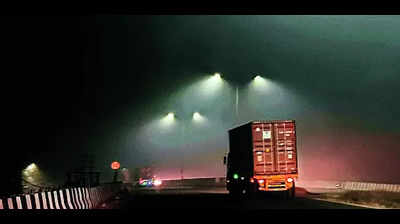
Ludhiana: A thick layer of smog blanketed the city on Saturday, keeping the sun out and contributing to a slight dip in daytime temperatures. The haze, which has lingered in the city’s skies for several days, kept temperatures cooler than average for much of the day, with the maximum reaching only 28.4°C—just below the seasonal norm.
In contrast, night temperatures were unseasonably warm at 17.4°C, over five degrees above the typical minimum for this time of year. The Meteorological Department has forecast clearer weather for the next few days, with fog or mist expected in the mornings followed by sunshine.
A partly cloudy outlook is predicted mid-week, with gradual cooling expected to bring daytime temperatures down to 26°C and night temperatures to 15°C by Friday. Residents have noticed the seasonal shift. Harjot Singh, a local, described Ludhiana’s current weather as “gloomy,” with the sun barely visible behind the thick haze.
Rupinder Kaur, a mother of a young child, shared that she has started dressing her son in warmer clothing to cope with the changing conditions. The persistent smog and mild temperatures signal the arrival of cooler days ahead. We also published the following articles recently Smog screen hangs thick on city day after Diwali Ludhiana residents experienced severe air pollution the day after Diwali, with the Air Quality Index (AQI) reaching 339, the highest in nearly two years.
Experts attributed the spike in pollution to firecrackers and stagnant weather conditions. The lack of wind and rain trapped pollutants, leading to respiratory problems, especially among the elderly. Winter delayed: Warmer nights ahead as IMD predicts high temperatures in Nov Nagpur residents can expect a warmer than usual November, as the IMD predicts above-average temperatures.
Despite winter typically arriving in mid-November, this year's warm spell is attributed to changing climate patterns and cyclonic activity in the Bay of Bengal. These conditions prevent the arrival of cold northerly winds, leading to warmer temperatures and a shorter winter season..














